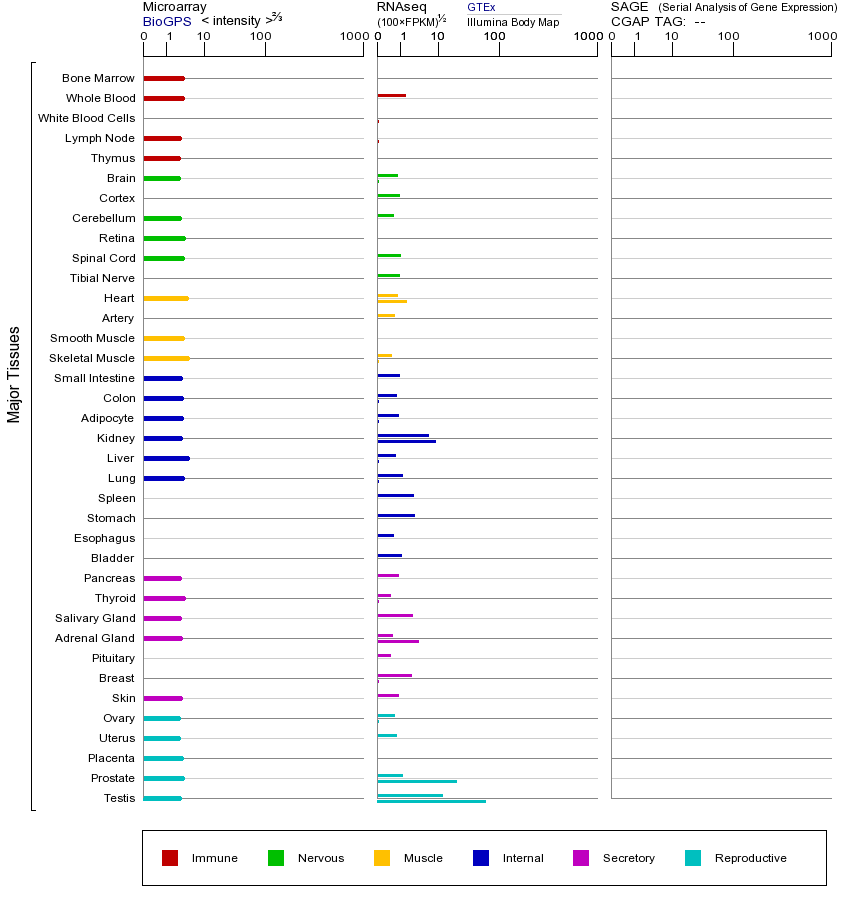EDDM3A (epididymal protein 3A)
- symbol:
- EDDM3A
- locus group:
- protein-coding gene
- location:
- 14q11.2
- gene_family:
- alias symbol:
- HE3-ALPHA
- alias name:
- None
- entrez id:
- 10876
- ensembl gene id:
- ENSG00000181562
- ucsc gene id:
- uc001vyc.4
- refseq accession:
- NM_006683
- hgnc_id:
- HGNC:16978
- approved reserved:
- 2002-09-23
EDDM3A(Epidermal Differentiation Complex Member 3A)是表皮分化复合体(Epidermal Differentiation Complex, EDC)基因家族的一员,该家族位于人类1号染色体上,包含多个与皮肤屏障形成和角质化过程相关的基因。EDC家族的共性在于它们编码的蛋白质主要参与表皮终末分化,维持皮肤屏障功能,并调控角质形成细胞的增殖与凋亡平衡。EDDM3A的具体功能尚未完全明确,但基于其家族特性,推测它可能参与表皮细胞的分化或细胞间粘附,其表达产物可能是一种结构蛋白或信号分子,作用于皮肤角质层或颗粒层。若EDDM3A发生功能丧失突变,可能导致皮肤屏障缺陷,表现为干燥、脱屑或炎症性疾病(如特应性皮炎或鱼鳞病);而过表达则可能干扰正常表皮更新,引发过度角质化。目前研究未明确其与特定疾病的直接关联,但EDC家族整体异常与银屑病、湿疹等皮肤病变相关。若EDDM3A表达下调,可能削弱皮肤防御功能,增加外界刺激敏感性;而过表达可能抑制其他EDC成员(如丝聚蛋白Filaggrin或兜甲蛋白Loricrin)的功能,破坏角质层稳态。专业术语中,"表皮终末分化"指表皮细胞逐渐失去细胞核、形成角质层的成熟过程;"角质形成细胞"是表皮的主要细胞类型。需注意"EDDM3A"的命名可能存在其他文献变体(如未标准化的暂用名),建议通过基因数据库(如NCBI Gene)确认最新信息。
Testicular sperm are morphologically differentiated but are not progressively motile nor able to fertilize an egg. Post-testicular maturation requires exposure of spermatozoa to the microenvironment of the epididymal lumen. Spermatozoa undergo extensive changes in the epididymis, including enzymatic modifications, loss of pre-existing components and addition of new glycoproteins from epididymal secretions. These modifying proteins and enzymes are synthesized by epithelial cells lining the epididymal duct and secreted apically into the lumen, where they come into contact with, and may be absorbed onto, the sperm membranes. The proteins encoded by the genes in this cluster are synthesized and secreted by epididymal epithelial cells. [provided by RefSeq, Jul 2008]
睾丸精子形态上有区别,但不是逐步能动,也能够使卵子受精。睾丸后成熟需要精子暴露在附睾管腔的微环境。精子经过附睾丰富的变化,包括酶法修饰,预先存在的成分损失和增加的附睾分泌糖蛋白新。这些修饰的蛋白质和酶通过上皮细胞衬附睾管合成和顶部分泌入管腔,在那里它们与接触,并且可被吸收到,精子膜。通过在该簇的基因编码的蛋白质被合成,并通过附睾上皮细胞分泌。 [由RefSeq的,2008年7月提供]
基因本体信息
EDDM3A基因(以及对应的蛋白质)的细胞分布位置:
- 质膜
- 细胞质
- 细胞外
- 高尔基体
- 囊泡
- 细胞骨架
- 内质网
- 细胞核
- 内体
- 溶酶体
- 线粒体
EDDM3A基因的本体(GO)信息:
联系方式
山东省济南市章丘区文博路2号 齐鲁师范学院 genelibs生信实验室
山东省济南市高新区舜华路750号大学科技园北区F座4单元2楼
电话: 0531-88819269
E-mail: product@genelibs.com
微信公众号
关注微信订阅号,实时查看信息,关注医学生物学动态。







